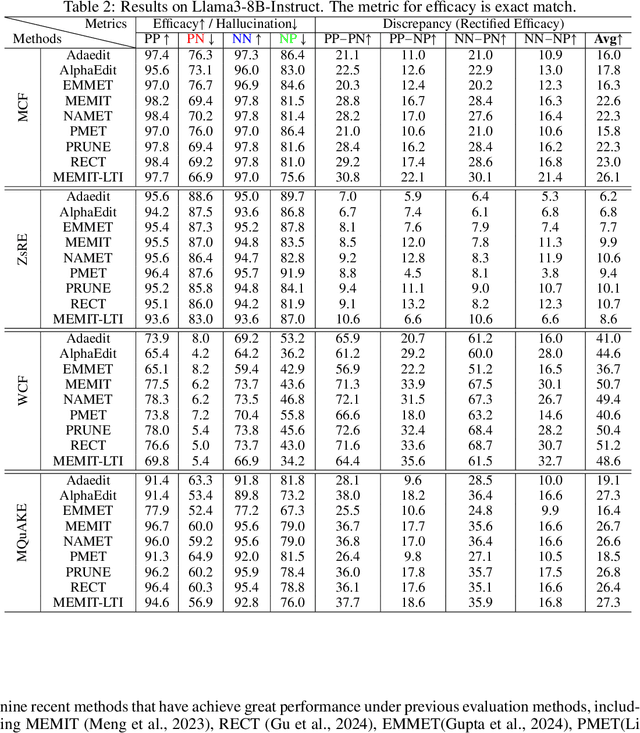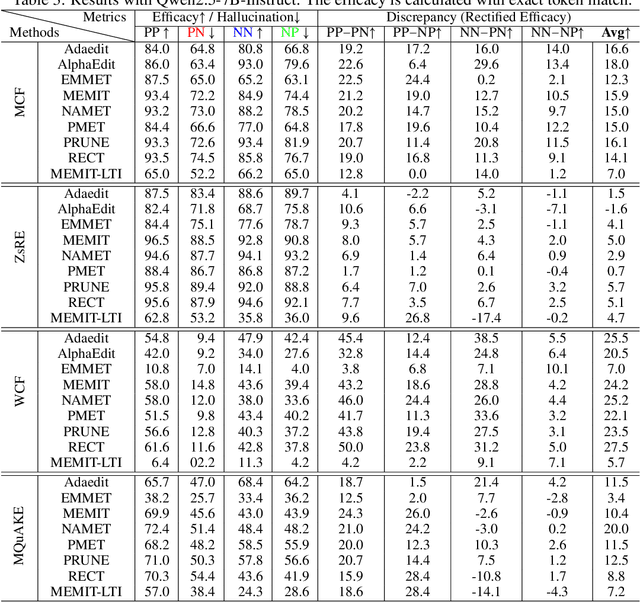Jun Wang
IBM T. J. Watson Research Center
ColorEcosystem: Powering Personalized, Standardized, and Trustworthy Agentic Service in massive-agent Ecosystem
Oct 27, 2025Abstract:With the rapid development of (multimodal) large language model-based agents, the landscape of agentic service management has evolved from single-agent systems to multi-agent systems, and now to massive-agent ecosystems. Current massive-agent ecosystems face growing challenges, including impersonal service experiences, a lack of standardization, and untrustworthy behavior. To address these issues, we propose ColorEcosystem, a novel blueprint designed to enable personalized, standardized, and trustworthy agentic service at scale. Concretely, ColorEcosystem consists of three key components: agent carrier, agent store, and agent audit. The agent carrier provides personalized service experiences by utilizing user-specific data and creating a digital twin, while the agent store serves as a centralized, standardized platform for managing diverse agentic services. The agent audit, based on the supervision of developer and user activities, ensures the integrity and credibility of both service providers and users. Through the analysis of challenges, transitional forms, and practical considerations, the ColorEcosystem is poised to power personalized, standardized, and trustworthy agentic service across massive-agent ecosystems. Meanwhile, we have also implemented part of ColorEcosystem's functionality, and the relevant code is open-sourced at https://github.com/opas-lab/color-ecosystem.
Switchable Token-Specific Codebook Quantization For Face Image Compression
Oct 27, 2025Abstract:With the ever-increasing volume of visual data, the efficient and lossless transmission, along with its subsequent interpretation and understanding, has become a critical bottleneck in modern information systems. The emerged codebook-based solution utilize a globally shared codebook to quantize and dequantize each token, controlling the bpp by adjusting the number of tokens or the codebook size. However, for facial images, which are rich in attributes, such global codebook strategies overlook both the category-specific correlations within images and the semantic differences among tokens, resulting in suboptimal performance, especially at low bpp. Motivated by these observations, we propose a Switchable Token-Specific Codebook Quantization for face image compression, which learns distinct codebook groups for different image categories and assigns an independent codebook to each token. By recording the codebook group to which each token belongs with a small number of bits, our method can reduce the loss incurred when decreasing the size of each codebook group. This enables a larger total number of codebooks under a lower overall bpp, thereby enhancing the expressive capability and improving reconstruction performance. Owing to its generalizable design, our method can be integrated into any existing codebook-based representation learning approach and has demonstrated its effectiveness on face recognition datasets, achieving an average accuracy of 93.51% for reconstructed images at 0.05 bpp.
Hi-Agent: Hierarchical Vision-Language Agents for Mobile Device Control
Oct 16, 2025Abstract:Building agents that autonomously operate mobile devices has attracted increasing attention. While Vision-Language Models (VLMs) show promise, most existing approaches rely on direct state-to-action mappings, which lack structured reasoning and planning, and thus generalize poorly to novel tasks or unseen UI layouts. We introduce Hi-Agent, a trainable hierarchical vision-language agent for mobile control, featuring a high-level reasoning model and a low-level action model that are jointly optimized. For efficient training, we reformulate multi-step decision-making as a sequence of single-step subgoals and propose a foresight advantage function, which leverages execution feedback from the low-level model to guide high-level optimization. This design alleviates the path explosion issue encountered by Group Relative Policy Optimization (GRPO) in long-horizon tasks and enables stable, critic-free joint training. Hi-Agent achieves a new State-Of-The-Art (SOTA) 87.9% task success rate on the Android-in-the-Wild (AitW) benchmark, significantly outperforming prior methods across three paradigms: prompt-based (AppAgent: 17.7%), supervised (Filtered BC: 54.5%), and reinforcement learning-based (DigiRL: 71.9%). It also demonstrates competitive zero-shot generalization on the ScreenSpot-v2 benchmark. On the more challenging AndroidWorld benchmark, Hi-Agent also scales effectively with larger backbones, showing strong adaptability in high-complexity mobile control scenarios.
A.I.R.: Enabling Adaptive, Iterative, and Reasoning-based Frame Selection For Video Question Answering
Oct 06, 2025Abstract:Effectively applying Vision-Language Models (VLMs) to Video Question Answering (VideoQA) hinges on selecting a concise yet comprehensive set of frames, as processing entire videos is computationally infeasible. However, current frame selection methods face a critical trade-off: approaches relying on lightweight similarity models, such as CLIP, often fail to capture the nuances of complex queries, resulting in inaccurate similarity scores that cannot reflect the authentic query-frame relevance, which further undermines frame selection. Meanwhile, methods that leverage a VLM for deeper analysis achieve higher accuracy but incur prohibitive computational costs. To address these limitations, we propose A.I.R., a training-free approach for Adaptive, Iterative, and Reasoning-based frame selection. We leverage a powerful VLM to perform deep, semantic analysis on complex queries, and this analysis is deployed within a cost-effective iterative loop that processes only a small batch of the most high-potential frames at a time. Extensive experiments on various VideoQA benchmarks demonstrate that our approach outperforms existing frame selection methods, significantly boosts the performance of the foundation VLM, and achieves substantial gains in computational efficiency over other VLM-based techniques.
Is Model Editing Built on Sand? Revealing Its Illusory Success and Fragile Foundation
Oct 01, 2025



Abstract:Large language models (LLMs) inevitably encode outdated or incorrect knowledge. Updating, deleting, and forgetting such knowledge is important for alignment, safety, and other issues. To address this issue, model editing has emerged as a promising paradigm: by precisely editing a small subset of parameters such that a specific fact is updated while preserving other knowledge. Despite its great success reported in previous papers, we find the apparent reliability of editing rests on a fragile foundation and the current literature is largely driven by illusory success. The fundamental goal of steering the model's output toward a target with minimal modification would encourage exploiting hidden shortcuts, rather than utilizing real semantics. This problem directly challenges the feasibility of the current model editing literature at its very foundation, as shortcuts are inherently at odds with robust knowledge integration. Coincidentally, this issue has long been obscured by evaluation frameworks that lack the design of negative examples. To uncover it, we systematically develop a suite of new evaluation methods. Strikingly, we find that state-of-the-art approaches collapse even under the simplest negation queries. Our empirical evidence shows that editing is likely to be based on shortcuts rather than full semantics, calling for an urgent reconsideration of the very basis of model editing before further advancements can be meaningfully pursued.
AccidentBench: Benchmarking Multimodal Understanding and Reasoning in Vehicle Accidents and Beyond
Sep 30, 2025Abstract:Rapid advances in multimodal models demand benchmarks that rigorously evaluate understanding and reasoning in safety-critical, dynamic real-world settings. We present AccidentBench, a large-scale benchmark that combines vehicle accident scenarios with Beyond domains, safety-critical settings in air and water that emphasize spatial and temporal reasoning (e.g., navigation, orientation, multi-vehicle motion). The benchmark contains approximately 2000 videos and over 19000 human-annotated question--answer pairs spanning multiple video lengths (short/medium/long) and difficulty levels (easy/medium/hard). Tasks systematically probe core capabilities: temporal, spatial, and intent understanding and reasoning. By unifying accident-centric traffic scenes with broader safety-critical scenarios in air and water, AccidentBench offers a comprehensive, physically grounded testbed for evaluating models under real-world variability. Evaluations of state-of-the-art models (e.g., Gemini-2.5 Pro and GPT-5) show that even the strongest models achieve only about 18% accuracy on the hardest tasks and longest videos, revealing substantial gaps in real-world temporal, spatial, and intent reasoning. AccidentBench is designed to expose these critical gaps and drive the development of multimodal models that are safer, more robust, and better aligned with real-world safety-critical challenges. The code and dataset are available at: https://github.com/SafeRL-Lab/AccidentBench
Agent4FaceForgery: Multi-Agent LLM Framework for Realistic Face Forgery Detection
Sep 16, 2025Abstract:Face forgery detection faces a critical challenge: a persistent gap between offline benchmarks and real-world efficacy,which we attribute to the ecological invalidity of training data.This work introduces Agent4FaceForgery to address two fundamental problems: (1) how to capture the diverse intents and iterative processes of human forgery creation, and (2) how to model the complex, often adversarial, text-image interactions that accompany forgeries in social media. To solve this,we propose a multi-agent framework where LLM-poweredagents, equipped with profile and memory modules, simulate the forgery creation process. Crucially, these agents interact in a simulated social environment to generate samples labeled for nuanced text-image consistency, moving beyond simple binary classification. An Adaptive Rejection Sampling (ARS) mechanism ensures data quality and diversity. Extensive experiments validate that the data generated by our simulationdriven approach brings significant performance gains to detectors of multiple architectures, fully demonstrating the effectiveness and value of our framework.
VeriOS: Query-Driven Proactive Human-Agent-GUI Interaction for Trustworthy OS Agents
Sep 09, 2025Abstract:With the rapid progress of multimodal large language models, operating system (OS) agents become increasingly capable of automating tasks through on-device graphical user interfaces (GUIs). However, most existing OS agents are designed for idealized settings, whereas real-world environments often present untrustworthy conditions. To mitigate risks of over-execution in such scenarios, we propose a query-driven human-agent-GUI interaction framework that enables OS agents to decide when to query humans for more reliable task completion. Built upon this framework, we introduce VeriOS-Agent, a trustworthy OS agent trained with a two-stage learning paradigm that falicitate the decoupling and utilization of meta-knowledge. Concretely, VeriOS-Agent autonomously executes actions in normal conditions while proactively querying humans in untrustworthy scenarios. Experiments show that VeriOS-Agent improves the average step-wise success rate by 20.64\% in untrustworthy scenarios over the state-of-the-art, without compromising normal performance. Analysis highlights VeriOS-Agent's rationality, generalizability, and scalability. The codes, datasets and models are available at https://github.com/Wuzheng02/VeriOS.
Baseband Model, Cutoff Rate Bounds and Constellation Shaping for Mixed Gaussian-Impulsive Noise
Sep 03, 2025Abstract:Mixed noise, composed of white Gaussian noise (WGN) and impulsive noise (IN), appears in numerous communication scenarios and can severely degrade system performance. In this paper, we address this issue by optimizing the transmitted constellation under mixed noise based on a theoretical analysis of the cutoff rate (CR). First, starting from the passband model of the mixed noise, we derive its corresponding baseband representation. Due to the complexity of the CR, an exact analytic expression is generally intractable. Therefore, the baseband noise model is employed to obtain closed-form lower and upper bounds of the CR. A piecewise linear approximation is applied to derive efficient bounds by exploiting the algebraic properties of the integral terms. These bounds are then used as criteria to optimize the transmitted constellation points in both geometric and probabilistic distributions. The projected gradient method is employed to solve the optimization problem, and the convergence and properties of the solutions are analyzed. Numerical results demonstrate that the proposed CR bounds are tight and exhibit the expected asymptotic behavior. Furthermore, the optimized constellation scheme achieves a significant rate improvement compared to baselines.
Beyond Benchmark: LLMs Evaluation with an Anthropomorphic and Value-oriented Roadmap
Aug 26, 2025Abstract:For Large Language Models (LLMs), a disconnect persists between benchmark performance and real-world utility. Current evaluation frameworks remain fragmented, prioritizing technical metrics while neglecting holistic assessment for deployment. This survey introduces an anthropomorphic evaluation paradigm through the lens of human intelligence, proposing a novel three-dimensional taxonomy: Intelligence Quotient (IQ)-General Intelligence for foundational capacity, Emotional Quotient (EQ)-Alignment Ability for value-based interactions, and Professional Quotient (PQ)-Professional Expertise for specialized proficiency. For practical value, we pioneer a Value-oriented Evaluation (VQ) framework assessing economic viability, social impact, ethical alignment, and environmental sustainability. Our modular architecture integrates six components with an implementation roadmap. Through analysis of 200+ benchmarks, we identify key challenges including dynamic assessment needs and interpretability gaps. It provides actionable guidance for developing LLMs that are technically proficient, contextually relevant, and ethically sound. We maintain a curated repository of open-source evaluation resources at: https://github.com/onejune2018/Awesome-LLM-Eval.
 Add to Chrome
Add to Chrome Add to Firefox
Add to Firefox Add to Edge
Add to Edge